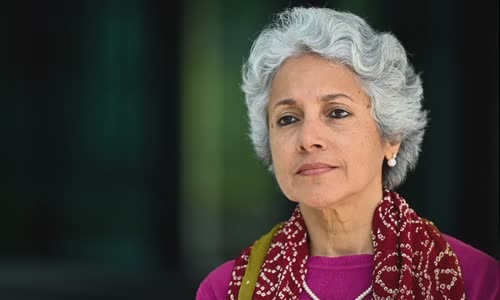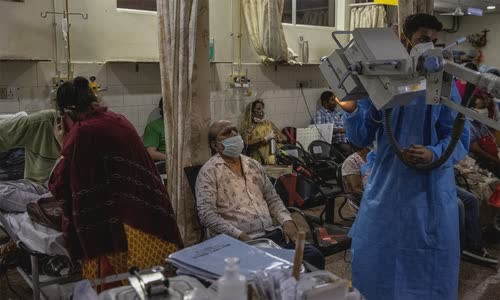Swaminathan, the head of the WHO science department, identified the strain B.1.617 as one of the factors that made Covid-19 in India "gaining vertical".
"In a large country like India, low-level spread has occurred for months. Strain B.1.617 appears in this country and is more likely to spread gradually, but the original signs

Photo: AFP
Swaminathan identified the strains B.1.617, first discovered in India in October 2020, which was one of the factors contributing to disaster in her hometown.
"At that time, the epidemic wave was difficult to stop, because it was infected for tens of thousands of people and multiplying at an unstoppable speed," Swaminathan said.
India on May 8 recorded more than 4,000 deaths from NCOV, a record increase in 24 hours, with more than 400,000 new cases.
Soumya Swaminathan in the journey with AFP in Geneva, Switzerland, on May 8.
WHO recently listed B.1.617, including a number of mutant strains and slightly different characteristics, "the variant needs to care about", but has not taken it to the list of "worrying variations".
Health agencies of some countries, including the US and Britain, consider B.1.617 are worrying strains.
"B.1.617 is a worrying strain because there are some mutations that increase the ability to spread and can help viruses resist antibodies created by vaccination or formed due to previous NCOV infection," Swaminathan said

Photo: Reuters
However, she argued that it was impossible to blame B.1.617 when the number of deaths in India increased records, and later recognized South Asian countries to seem to "lose vigilant before the pandemic" when allowed the nest
Patient Covid-19 in a hospital in India on May 2.
Despite India trying to expand the vaccination scale to prevent the outbreak, Swaminathan warns that only Vaccine Covid-19 injects are not enough to control the situation.
"It will take months, even for years, to achieve the rate of 70-80% population," Swaminathan said.
The outbreak in India was identified by experts as "scary" not only due to sudden increase in infections and deaths, but also the risk of significantly dangerous NCOV strains.
"The more spread virus, the more likely to appear mutations and adaptive, Swaminathan said.



 Hannah Fatunase
Hannah Fatunase







